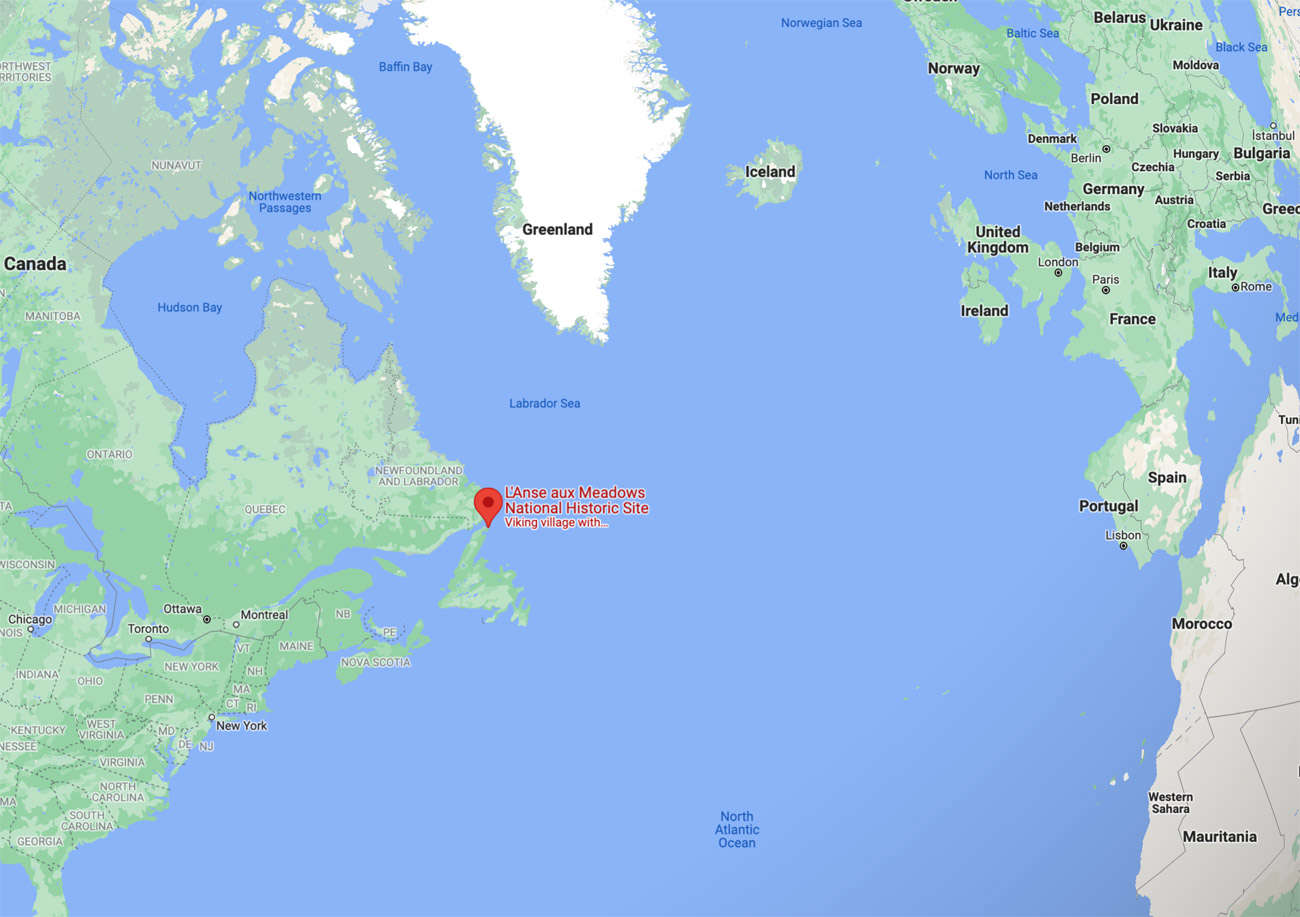Create a free profile to get unlimited access to exclusive videos, sweepstakes, and more!
Cancel Columbus Day: Sun storms pinpoint Europeans being in Canada in 1021 A.D.

New research pinpoints an exact date Vikings from Europe were in North America: 1021 A.D. (one millennium ago this year), 430 years before Christopher Columbus was even born.
How was this determination possible? Because the Sun erupted in an immense series of storms that altered Earth's atmosphere, leaving measurable changes in tree rings at the time.
In the 1960s, archaeologists discovered a Norse Viking site in L'Anse aux Meadows, in the northern tip of Newfoundland. By looking at the styles of the remains there as well as examining Icelandic sagas (oral stories told over generations, and not written down until centuries later), they were able to get a rough date of the site of around 1000 A.D. But this is a relative date, found by comparing events at different times (so, say, they could tell it was after some other event, but not exactly how long after).
This is where the Sun comes in. In the years 774 and 993 the Sun blasted out some truly epic explosions called solar storms, most likely in the form of solar flares. These are spectacular events that occur when the Sun's magnetic field lines get tangled up and suddenly short circuit, releasing their stored-up energy. This can easily equal hundreds of millions of times the energy released in a one-megaton nuke — the 774 A.D. event was the biggest in 10,000 years and was strong enough to power all human energy use for 300,000 years!
These flares send out huge waves of subatomic particles into space. When they slam into Earth's atmosphere they can generate aurorae and power outages, but they also create isotopes of certain atoms — for example, the majority of carbon on Earth has six protons and six neutrons in the atomic nucleus (called carbon-12), but a flare can increase the amount of the isotope carbon-14, which has 8 neutrons. The relative amounts of these isotopes can be measured in the lab; tree rings around the world were seen to have elevated amounts in both 774 and 993 A.D. (by 12 and 9%, respectively), and in fact those solar storms were first discovered by examining tree rings.
As you may know, a tree grows one ring per year, allowing the tree's age to be measured (this science is called dendrochronology). It can also be used to determine when the tree was felled, if the outer bark edge is still intact — somewhat amusingly, this is called the waney edge.
A team of scientists looked at wood found at the L'Anse aux Meadows Viking site. In three cases the trees had been physically cut down, and moreover, they were clearly cut with metal tools — Vikings had metal implements at the time, but indigenous people did not. The wood was all from different trees (one was fir, and another juniper, for example). The key parts here are that the wood was all from trees that had been alive for many decades, and all had their waney edge intact as well.
The scientists extracted 127 samples from the wood, and 83 rings were examined. They used two methods to secure dates. The first was to compare the amount of carbon-14 in each ring with known atmospheric amounts from the time. This gives a rough date for the waney edge of the wood. They also then looked for an anomalous spike in carbon-14 in an inner ring, knowing this would have come from the 993 A.D. event, and then simply counted the rings outward from there to get the date of the waney edge.
In all three samples the waney edge was dated to the same year: 1021 A.D. This would be incredibly unlikely to occur at random.
This means that Vikings were definitely in North America, specifically Newfoundland, Canada, more than four and a half centuries before Columbus. And mind you this may not have been the first visit, just the first we have evidence for. So Vikings were there in 1021 A.D. at the latest.
In fact, looking at different kinds of cells in the wood the scientists could tell one tree was felled in the spring of that year, while another was in the summer/autumn, indicating the Vikings were there for several months.
This is historically very interesting, especially since it's still erroneously taught in American schools that Columbus discovered America. That's ridiculous on its face, since he and his crew met indigenous natives*, and it's known the Vikings were in Canada long before. But now, with this new work, we know exactly when they were there.
There's a lot of scientific value to this as well. The sagas tell of Vikings peacefully meeting indigenous people in America, and there was likely an exchange of flora and fauna. They may have swapped pathogens, too, which is common in such events, and makes for interesting epidemiology. There may also have been some, ah, genetic material exchanges as well, though testing of the population in Norse Greenland doesn't show evidence of it. That doesn't preclude it, though, and knowing humans it does seem like something like that may have happened. I'd bet that way.
I've said many times that science is a tapestry. In this case the metaphor is strong: It took the wildly different fields of solar astronomy and magnetism, cosmochemistry, dendrochronology, and archaeology all woven together to examine the evidence that led to understanding when exactly Europeans visited North America.
Science! I love this stuff.
*Also, he is presented as some sort of noble explorer who proved the Earth was round. This is grossly wrong. The Earth had been known to be round for at least 1700 years before Columbus, and in fact he thought the Earth was far smaller than already known; he expected the trip to be short and packed provisions accordingly. If he hadn't stumbled on the Bahamas by accident his crew might've starved due to his error. Also, his stature of "noble" is, um, highly arguable.




























